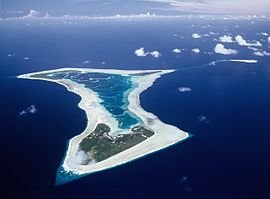
[This is a comment I've put on social media and sent to a few journos]
Will 2019 be the year that Papua New Guinea becomes the Syria of the Pacific, splitting into warring fragments and suffering the interventions of superpowers? If this idea seems fantastic, think about the event that's due to be held on June the 15th in Bougainville.
On June the 15th the people of Bougainville will get the long-promised chance to vote on whether they want to secede from Papua New Guinea. Bankrolled by multinational company Rio Tinto, the Papuan army waged war on Bougainville from 1988 to 1998, after islanders closed a huge, polluted copper mine.
15,000 Bougainvilleans died during the war, mainly as a result of a Papuan blockade that prevented medicine and food reaching their island. The blockade was Rio Tinto's idea. Bougainvilleans laid down their arms in return for partial autonomy and a vote on independence.
Bougainvilleans are likely to vote overwhelmingly for independence from Papua New Guinea. But the final decision on secession will be made by PNG's parliament, which is likely to be strongly against the idea. Papuan Prime Minister Peter O'Neill has predicted that not a single MP will back Bougainville.
Papuan politicians fear losing Bougainville's mineral reserves, and worry about the signal that the island's secession would send to other parts of their country, like Enga province, which has a massive gold mine and suffered uncontrollable violence during last year's general election
If Bougainvilleans are denied independence, they are likely to once again take militant action to win it. & other parts of Papua New Guinea may well follow. PM O'Neill has already granted partial autonomy to Enga, New Ireland, and East New Britain, in an effort to placate secessionists there.
The Papuan state is dysfunctional. Last year civil servants went for months without pay. Police cannot maintain order. The army is politicised. Power is drifting from a Port Moresby-based elite to leaders in the resource-rich provinces. And China, the US and Australia are all watching.
China has funded ports and other infrastructure in parts of Papua New Guinea with mineral reserves, so that wealth can be exported without being routed through Port Moresby. Beijing's largesse might be seen as an investment in the break-up of Papua New Guinea.
Australia and the US have responded to China's interest in Papua New Guinea by announcing they will establish a naval base on Manus Island. The superpowers are being drawn into a contest over a collapsing state. It is not hard to imagine them backing different warring factions.
In the late '90s NZ organised the talks that led to the detente between Papua New Guinea and Bougainville's secessionists, and the promise of a referendum. If Bougainville votes for independence, will Ardern's government back the island, or join the US and Australia in siding with Peter O'Neill and the Papuan state?






